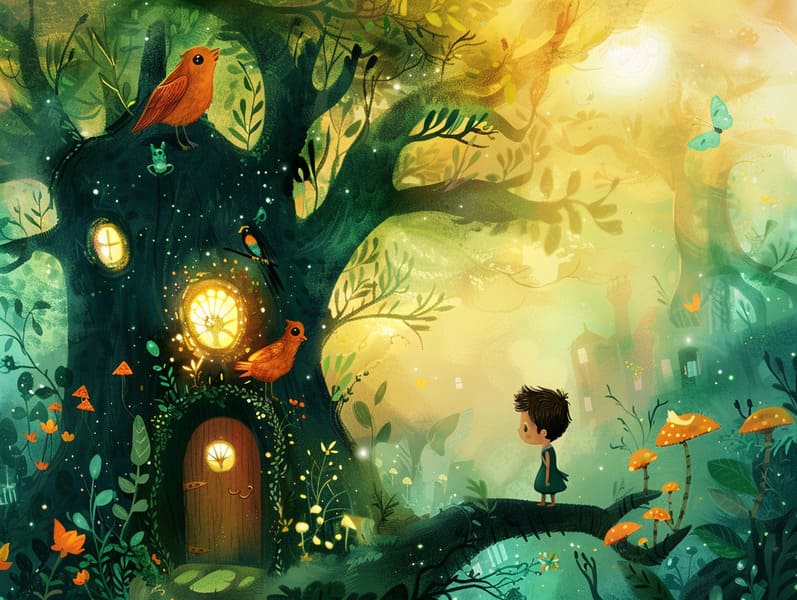The Formation of Best Fairy Tales with the Unfading Grace.
The Formation of Best Fairy Tales with the Unfading Grace.
Blog Article

Fairy tales have long histories. These stories have been passed down from one generation to the next well before they were ever published. They were born from a variety of backgrounds, including Indigenous traditions. They were initially transmitted among mature audiences, often carrying themes and messages pertaining to the societal norms and beliefs of the time.
The Grimm brothers, Jacob and Wilhelm Grimm, were among the first to gather and publish many of these beloved stories. Their published works, "Grimm's Story Collection," included classics like "Cinderella," "Hansel and Grethel," and "The True Story of Snow White," which have since become classics in the world of traditional fairy tales. Similarly, H. C. Andersen's fantastical fairy tales, such as "The Mermaid's Tale," and "The Story of the Ugly Duckling," have won hearts worldwide, cementing their place in the pantheon of treasured fairy tales.
Even though they are old, fairy tales remain as important as ever, especially as kids' bedtime tales. These charming stories are now available in many formats, including vividly illustrated books, charming animations, and internet fairy tales.
Their unwavering allure can be attributed to several charming aspects:
Key Lessons: Ancient fairy tales often offer important moral lessons. Fairy tales like "The Story of the Boy Who Cried Wolf" teach the virtue of integrity, while "The Hare and the Tortoise" highlight the virtues of resolve and humbleness. These stories offer young ones clear distinctions between moral and immoral, helping to shape their moral compass in a soft yet lasting way.
Warmth and Understanding: Classic fairy tales frequently present individuals facing struggles and tests, urging young listeners to feel with their struggles and encourage their triumphs. For instance, "The Story of Beauty and the Beast" shows us the merit of valuing inner qualities to perceive the real person of a soul, fostering empathy and understanding.
Cultural Appreciation: Many fairy tales are imbued with the cultural contexts from which they came. Immersing in these tales can provide enlightening views into different heritages, promoting a sense of international awareness and discernment.
Creativity and Fantasy: The imaginative elements in classic fairy tales—magical kingdoms—boost children’s imaginations. These fairy tales bring readers to supernatural realms, provoking inventive ideas and a sense of wonder that continues a lifetime.
Old fairy tales are not only bewitching but also pedagogical. They provide delightful tools in advancing various mental and emotional abilities in the young. When ancient fairy tales are told out loud, they foster linguistic abilities by showing new language items and intricate sentence structures. This practice also cultivates listening skills and mental focus, as young readers remain attentive, excited to see what happens next.
Furthermore, contemplating the themes and characters of ancient fairy tales can improve analytical skills and thinking skills. Children are educated to recognize patterns, predict happenings, and comprehend cause and effect. These explorations also assist children verbalize their thoughts and feelings, strengthening their emotional intelligence.
In today’s digital era, the abundance of online storybooks has made these fairy tales more obtainable than ever. Internet sites and web apps make available wide arrays of classic fairy tales that can be looked at or listened through anytime, anywhere. Fairy tales recited are particularly common, making available an interactive way for young click here ones to be a part of these fascinating tales. Narrated books and read-out-loud videos guide characters and settings to life, often supported by entrancing harmonies and instrumentals that augment the storytelling experience.
The timeless fascination of ancient fairy tales lies in their ability to modify to today's world while retaining their core values. Contemporary adaptations of these fairy tales often feature more diverse protagonists and modern settings, making them relatable to today’s audience. However, the key lessons of heroism, generosity, and justness remain unchanged, continuing to affect young listeners of all ages.
Old fairy tales also offer a sense of coziness and predictability. They deliver a well-structured narrative with a apparent beginning, middle, and end, often concluding with the termination of conflicts and the triumph of righteousness over wickedness. This foreseeability can be encouraging for young ones, offering a sense of steadfastness in an always shifting world.
Timeless fairy tales continue to captivate and inform new generations, maintaining their grace and relevance in modern society. As kids' bedtime tales, they impart upon a perfect blend of captivation and insight, nurturing moral values, empathy, and creativity. The proliferation of web-based fairy tales and the prevalence of fairy tales voiced make sure that these timeless narratives remain attainable to new generations.
By perpetuating and broadcasting these narratives, we continue to laud the rich tapestry of inventiveness and cultural heritage. Whether you are experiencing a vividly illustrated book, perusing a internet library, or listening through an audio story, the enchantment of popular fairy tales is always within reach. These tales emphasize of the consistent ability of tales and its ability to link us across eras and regions.
Even if you are enjoying a vividly illustrated book, exploring a cyber collection, or listening to an spoken story, the enchantment of bedtime fairy tales is always within reach.
These fairy tales remind us of the invariable influence of narratives and its ability to gather us across centuries and lands, forming a connection that fascinates and enlightens alike.